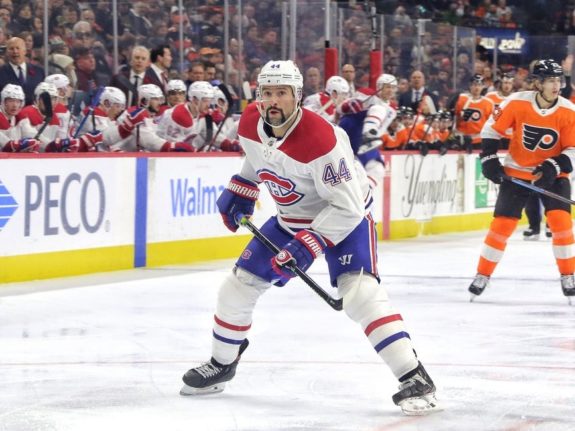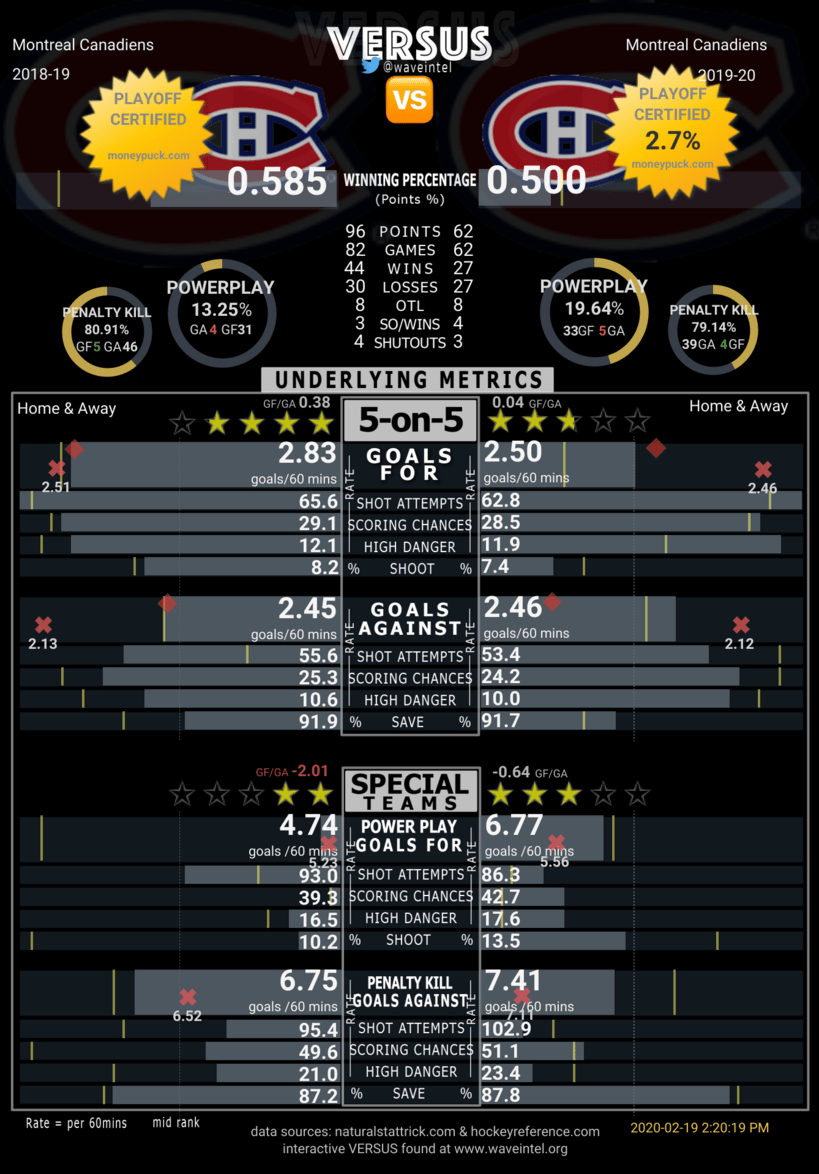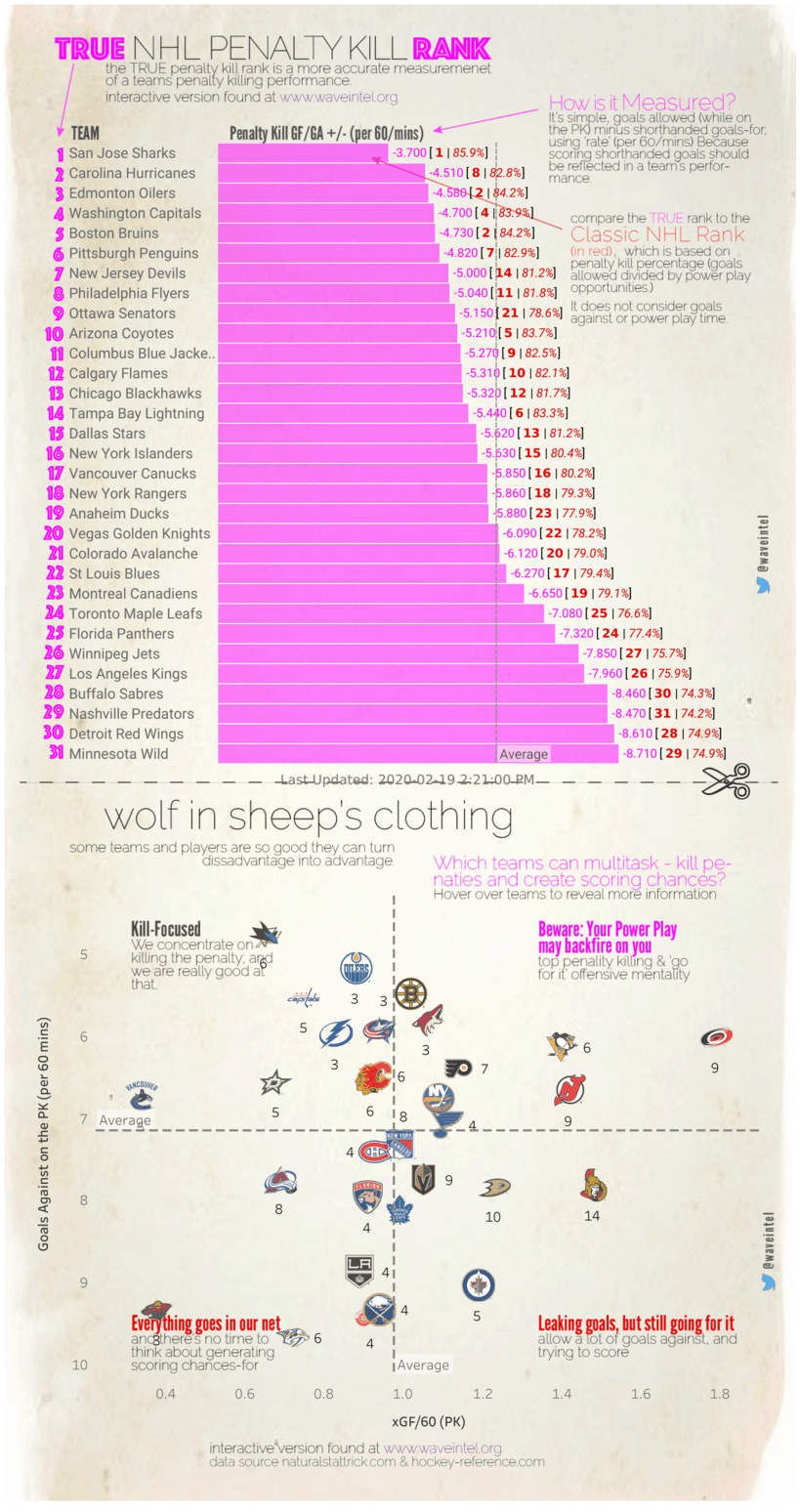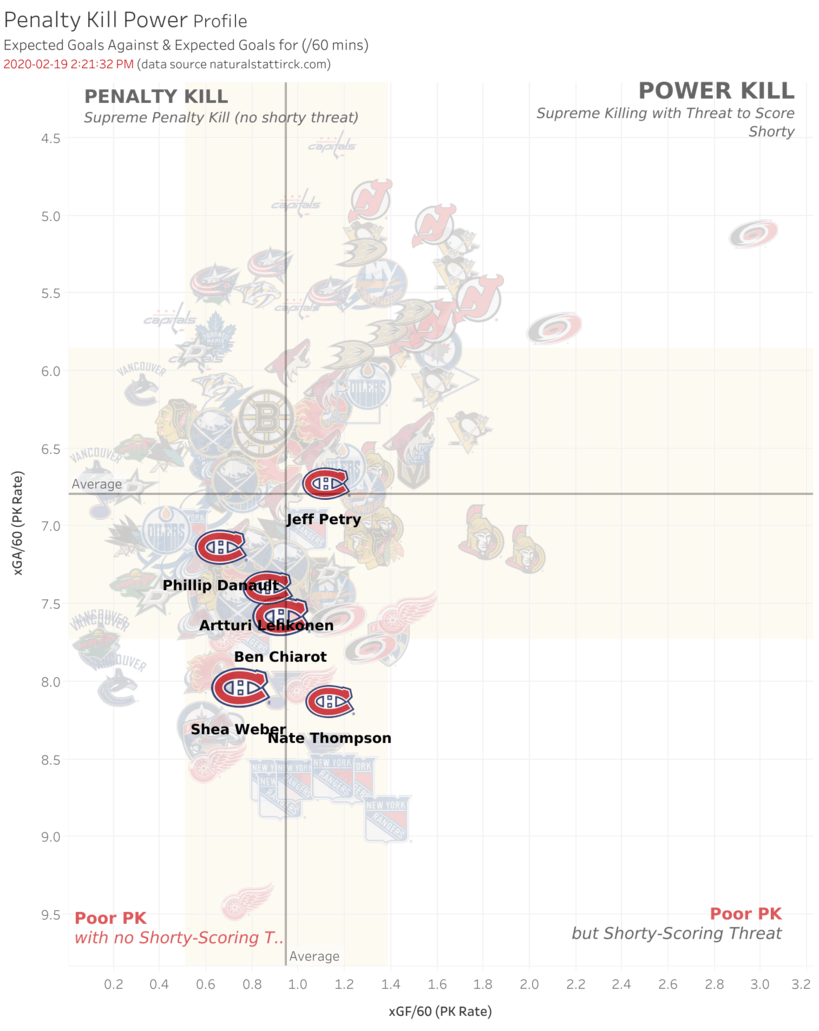It was not the injury to Jonathan Drouin or Paul Byron that derailed the Montreal Canadiens’ season. You can’t blame the power play or the lack of that elusive star centre either. It was the penalty kill that really sunk the team’s hopes.
But wait! Don’t leave. I know it sounds ridiculous and not sexy, but let me explain.
Related: Canadiens GM Showdown: Bergevin vs. Gainey
I used some simple analytics to identify the team’s poor performance and then applied the classic cost-benefit method to determine the best bang for their buck to rectify the problem.
What’s the Problem with the Canadiens?
A quick analytical assessment of the Canadiens using WaveIntel’s VERSUS tool shows, per the graphic below (last season on the left), what we already know: the Habs are a pretty strong five-on-five team, but their ability to convert chances into goals is not especially good.
Next up are the special teams, a major issue this season. The power play has been a sore spot since last season, but this season, the performance has been up and down with some success at home. Overall, the man advantage has been well below the NHL average.
Related: Top 3 Canadiens Goalies All-Time
Last but not least, the penalty kill has been bad and would be worse if not for a strong performance by Carey Price, who’s penalty-killing save percentage is in the top quarter of the NHL, (from ‘Bruins’ Pastrnak scores hat trick as Canadiens’ playoff hopes fade,’ Montreal Gazette, 02/12/2020). The Canadiens’ franchise goalie has propped up a very bad penalty kill to make it just bad.
Canadiens Deploy an Old-School Penalty Kill
By modern standards, the Canadiens’ penalty kill is old-school. The True Penalty Killing Ranking uses multiple variables to assess a team’s penalty-killing performance, including scoring shorthanded goals. The Canadiens rank 19th in the NHL but drop to 23rd using the True Penalty Killing Rank assessment.
The Canadiens’ penalty kill is not aggressive compared to other NHL teams that employ the surprise tactic of sending their premiere offensive players over the boards near the end of the power play to exploit any weakness on the second-power play unit. It works.
For some of the premiere penalty-killing units, as with the Pittsburgh Penguins, New Jersey Devils and Carolina Hurricanes, they kill and score. For some of the not-so-good penalty killing units, such as those of the Ottawa Senators and Anaheim Ducks, they score a lot of shorthanded goals which, in the end, boosts their overall penalty-killing performance. The Canadiens have scored four shorthanded goals while the Ducks have 10 and the Senators 14.
Canadiens’ Weak Penalty Killers
In the graphic below, we see that relative to the NHL, the Canadiens’ penalty-killers are not good and don’t provide Price with adequate support. Furthermore, teams have changed the dynamic of the penalty kill to be more aggressive because it’s hard to score on the power play when the penalty-killers possess the puck and try to score themselves.
The chart above is essentially a scathing assessment of the Canadiens’ penalty-killers. It uses the expected goals metric to assess their ability to suppress chances against (y-axis) and generate chances for (x-axis). Defenseman Jeff Petry is performing above average on both sides; suppression and chance creation. What’s alarming is the performance of players considered to be defensive specialists: Shea Weber and Nate Thompson. They are not only below average for suppressing chances against, they are outliers in negative terms.
However, I think it’s important to underline the limitations of this information. First, hockey data is inherently untrustworthy; there are so many variables and considerations. Secondly, it is virtually impossible to isolate a single player’s impact from the unit. One player can be really good but is brought down by the performance of the other three penalty-killers. It’s possible that’s the case here for Weber and Thompson.
Management Inaction on Fixable Penalty Kill Doomed Season
To recap the Canadiens’ performance issues: they have a decent five-on-five but have trouble scoring. They have a below average power play that can’t score frequently and consistency. And they have a below average penalty kill that is being dragged down by the penalty killers.
I think it’s easy to see where we are going here: These are problems that can be solved by acquiring players or fixing the offence; or can be solved by acquiring players or fixing the defence. Since goal-scoring snipers don’t grow on trees, the easier fix is on defence.

An important part of any fix is speed of execution by management. We often hear about how important adjustments are in the game and it has become an increasingly important component for management; to solve problems as quickly as possible to reduce the loss of points in the standings.
Whether it’s making in-house adjustment (why have they not tried Nick Cousins on the penalty kill? After all, he has been the team’s strongest defensive forward during five-on-five play) or acquiring outside help, improving the defence is a lot less expensive than trying to solve the offensive issues. For the Canadiens, fixing the penalty kill in November instead of in January would have been the most impactful thing they could have done; a missed opportunity. And for that inaction, the season is lost.


